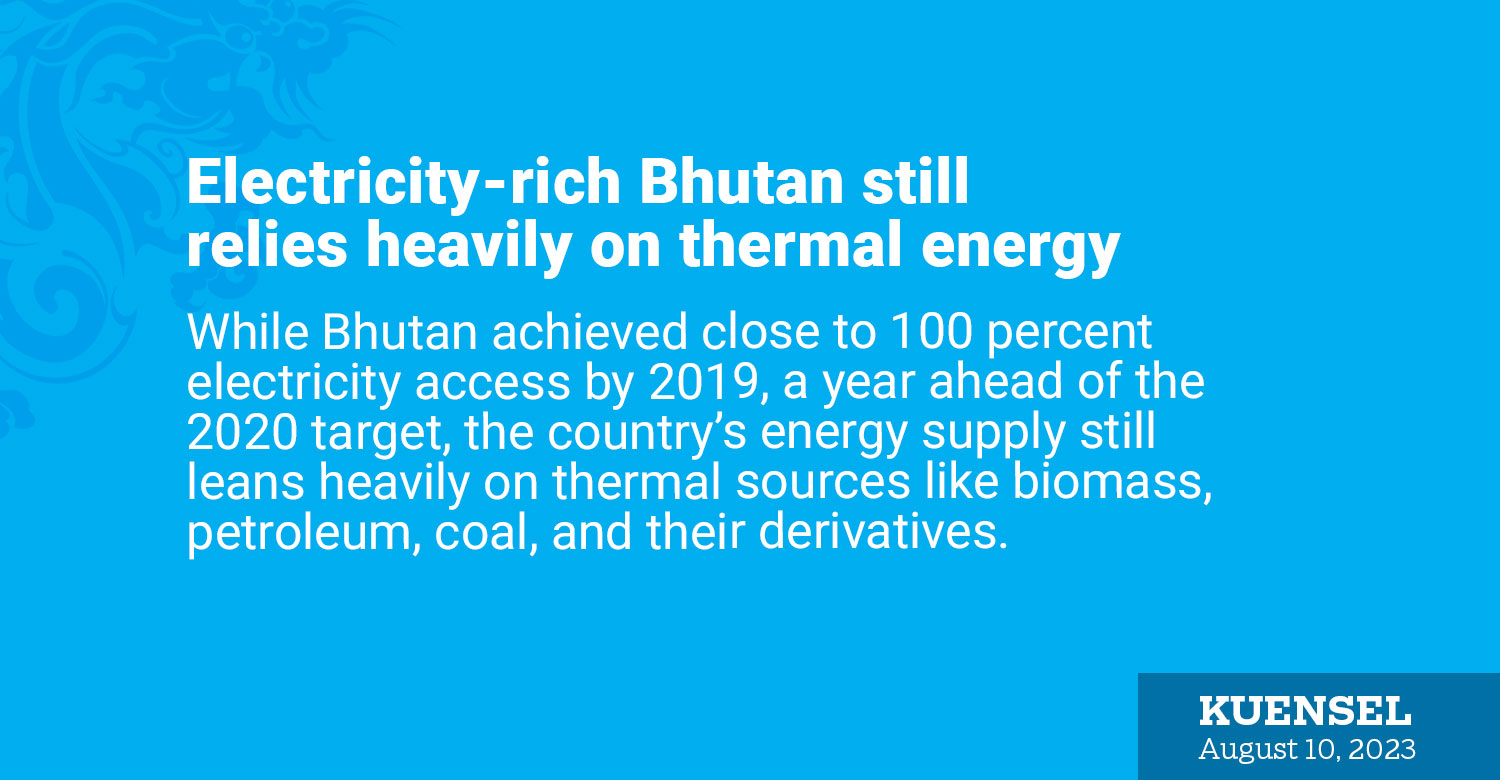Yangyel Lhaden
While Bhutan achieved close to 100 percent electricity access by 2019, a year ahead of the 2020 target, the country’s energy supply still leans heavily on thermal sources like biomass, petroleum, coal, and their derivatives.
According to the Bhutan Energy Data Directory (BEDD) 2022, thermal energy accounted for a substantial 62.4 percent, while electricity made up 37.6 percent of the total energy consumption last year.
The data further reveals that thermal energy amounted to 495,244.5 tonnes of oil equivalent (TOE) from a total energy supply of 794,263.28 TOE, surpassing energy demand by 40,822.25 TOE.
TOE is a unit used to compare different energy sources based on their energy content.
Within this energy mix, electricity constituted the largest portion of the total TOE, comprising 37.6 percent, followed by biomass at 25.2 percent, equivalent to 199,955.8 TOE, and coal and its derivatives at 19.6 percent totalling 155,699.5 TOE. Petroleum products represented 17.6 percent with 139,589.2 TOE, while electricity from alternative renewables such as solar and wind remained below one percent, according to BEDD 2022.
Comparing these figures to BEDD 2015 data, the share of electricity in the energy mix increased in 2022. In 2014, electricity contributed 28 percent or 182,092 TOE to the total energy consumption, but in 2022, this number exceeded by about 115,000 TOE. The overall energy consumption in 2014 was 650,220 TOE, with biomass dominating the energy mix, accounting for 234,369 TOE or 36 percent of total energy consumption.
Furthermore, in 2014, the building sector heavily utilised biomass in the form of fuelwood for cooking and heating, constituting 41.58 percent of the country’s total energy consumption, equivalent to 270,356 TOE.
Specifically, thermal energy consumption in buildings stood at 242,916 TOE, while electrical energy consumption was just 27,440 TOE, according to BEDD 2015.
The BEDD 2022 report highlighted a positive trend of reduced energy consumption in both the building and transport sectors compared to the data from BEDD 2015, particularly noting the contribution of alternative renewable energy sources.
The comparison of energy consumption data between 2014 and 2022 for petroleum, coal and derivatives, and biomass shows shift in the energy mix.
The building sector’s energy consumption dropped by over half last year, amounting to 154,176.05 TOE, compared to BEDD 2015. Additionally, the building sector’s biomass consumption was markedly lower, standing at 97,750.5 TOE in contrast to the 234,369 TOE recorded in 2014.
In 2014, petroleum products accounted for 21 percent of the total energy supply, approximately 138,192 TOE, whereas in 2022, they constituted 19.6 percent of the supply, around 139,589 TOE. It shows a slight decrease in the share of petroleum products, coupled with a marginal increase in actual consumption.
In contrast, coal and derivatives, comprising 15 percent of the energy supply— 97,657 TOE—in 2014, grew to 19.6 percent—155,699.5 TOE— in 2022. This shows there has been significant rise both in percentage and actual consumption.


